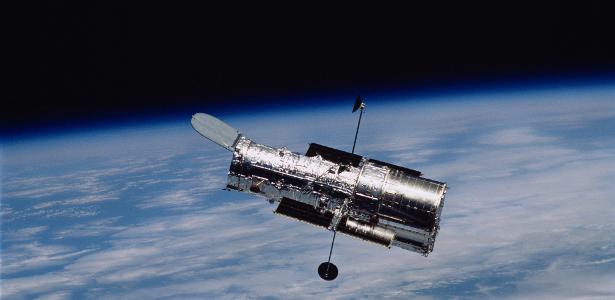It took more than a month, but NASA, the US space agency, found a cure for a technical defect in the telescope Hubble, which left him inoperative. The problem happened in the Power Control Unit (PCU) of the device.
The piece is located in the telescope’s payload computer, in orbit since 1990, which ensures that every piece of hardware receives a constant supply of power. The PCU contains a power regulator that supplies a constant 5 volts of electricity to the payload computer and its memory.
What happened, according to NASA, was that the voltage level of the regulator became too low, which means that the part may have degraded over time. Without the charge of energy necessary to operate, the computer was instructed to stop its operations. The fault was identified on the 13th of June.
“A series of tests, which included trying to restart and reconfigure the computer and the backup computer, were unsuccessful, but the information gained through these activities allowed the Hubble team to determine that the possible cause of the problem was the PCU” , described NASA on its official page.
rescue operation
The exchange of the part will start to be made this Thursday (15). In a few days, the old telescope will be like new and will be able to return to activities, according to the agency’s expectations.
In 2008, NASA made a similar change to Hubble’s equipment, when another part of the payload computer failed. A service mission in 2009 replaced the entire unit containing the computer with 1980s parts.
At the time, five astronauts traveled 570 km altitude to install the “new” computer, batteries and scientific instruments.
Resilience
The telescope revolutionized astronomy and allowed humanity to see some of the mysteries of the universe, such as black holes, the Solar System, the Milky Way and other distant galaxies.
Hubble has made more than 1.5 million observations of the universe. Its data have already yielded more than 18 thousand scientific articles around the world.
Its lifetime in orbit has already far exceeded scientists’ expectations. In recent years, he has overcome a series of technical failures. Between 1993 and 2009, NASA sent five rescue missions to the telescope and made a series of remote repairs.
In October of this year, the space agency plans to launch a companion for the “old man,” the James Webb Space Telescope, which will continue to expand Hubble’s legacy.
–


![Hilary Duff showed intimate photos of the birth. Internet users divided [FOTO] Hilary Duff showed intimate photos of the birth. Internet users divided [FOTO]](https://gfx.radiozet.pl/var/radiozetsg/storage/images/rozrywka/plotki/hilary-duff-pokazala-intymne-zdjecia-z-porodu-internauci-podzieleni-foto/16731083-1-pol-PL/Hilary-Duff-pokazala-intymne-zdjecia-z-porodu.-Internauci-podzieleni-FOTO_article.jpg)